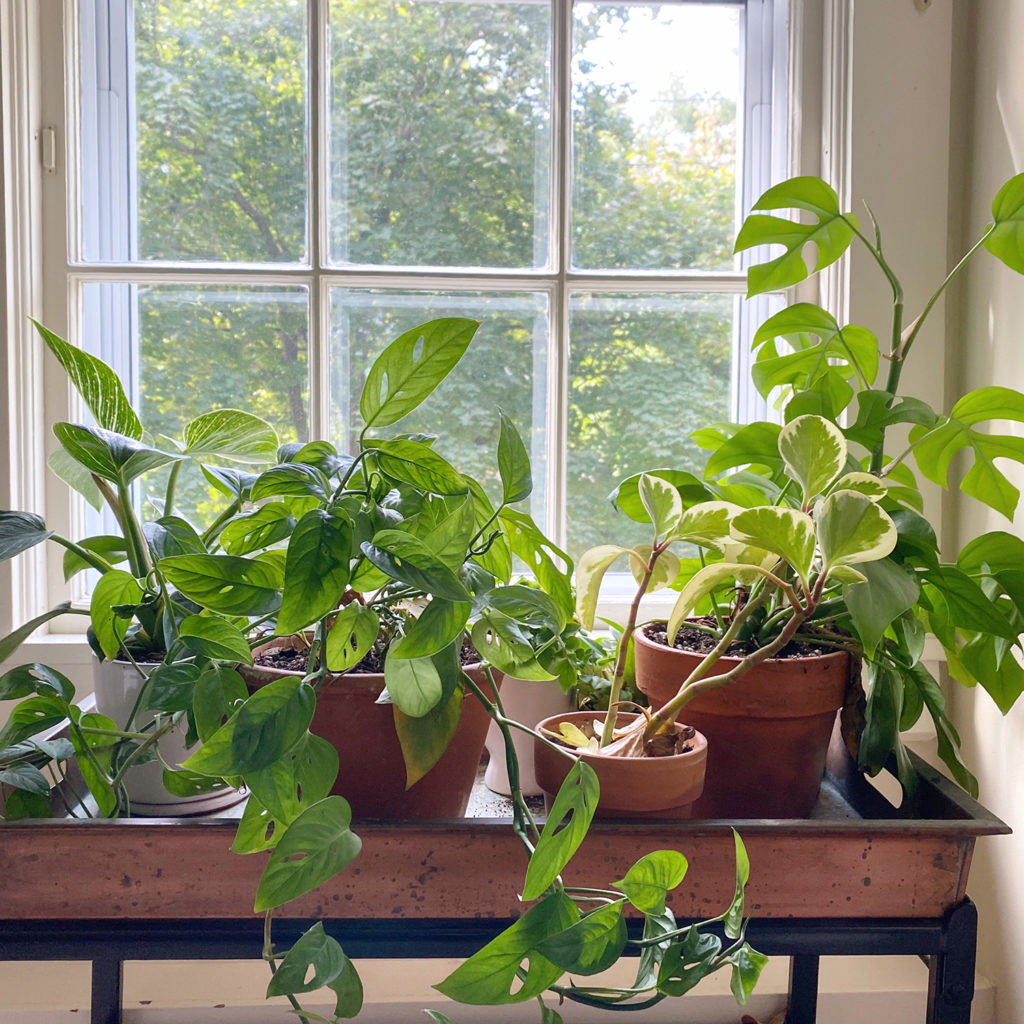Do you sometimes struggle with knowing how much or how often to water your houseplants? If so, you might want to try bottom watering instead. Let’s discuss four benefits of using this method for watering your plants, as well as offer a brief guide on how to do it.
What is Bottom Watering?
Bottom watering is exactly what it sounds like—watering your plants from the bottom of the planter instead of the top. To use this method, your plants will need to be in pots that have drainage holes.
First, make sure your plants need to be watered. Poke your finger into the soil about two inches deep to see if it is fully dry. If it’s dry, you’re safe to water. Next, choose where you are going to place your plants for watering. Some people choose bowls or shallow pans, while others might opt to use the kitchen sink or a bathtub for larger plants.
Place the pot(s) into your destination and add water. The plant will soak up the water through the drainage holes and get a nice, thorough watering. Remove the plant from the water once the top of the soil is moist.
It is good practice to set a timer for 10-20 minutes so you don’t leave your plants sitting in water for too long. If you notice your plant has absorbed all the water but the top of the soil is not yet damp, you can add more water to the pan. You will also want to make sure your plants are allowed to drain any excess water.

Why Choose This Method?
There are several reasons why bottom watering is a great way to ensure your plants are getting the water they need. Here are four main benefits:
1. Distributes Water More Evenly
If you’re watering from above, water can sometimes run through the soil too quickly and result in uneven moisture. Bottom watering allows for slower absorption, which results in better water distribution and more thorough watering.
2. Reduces Overwatering
When bottom watering, houseplants will only absorb the water they need. Because you wait for the soil to completely dry out between waterings, there is less chance of watering too frequently or overwatering—which also means a lower chance of root rot.
3. Protects the Leaves
Some indoor houseplants don’t react well to having water gather on their leaves or in crevices near their stems. In worst-case scenarios, this scenario can lead to root rot (and a dead plant). Bottom watering solves this issue by removing the source of the problem: a shower of water from above.
4. Promotes Root Growth
Roots will grow downwards in search of water and nutrients. Because houseplants absorb water from the bottom of the pot with this method, bottom watering encourages healthy root growth.
Bottom watering your houseplants is a great way to ensure they are getting the right amount of water and can help keep your plants healthy! Have you tried bottom watering? Which watering method do you prefer?
